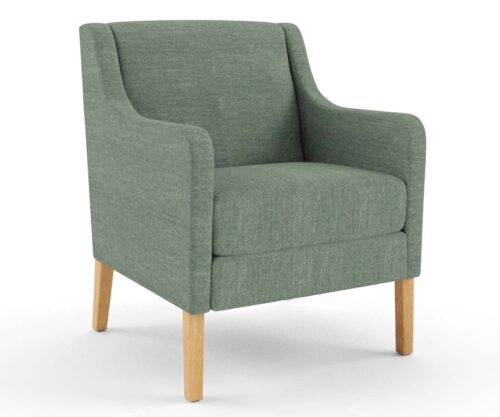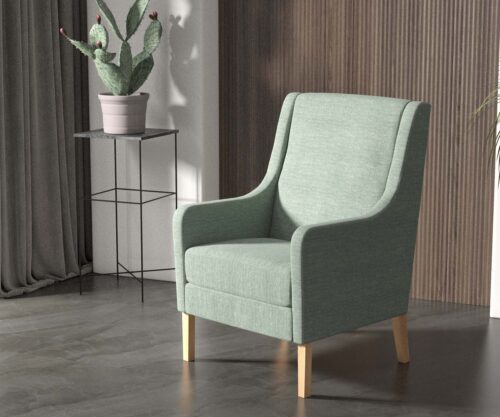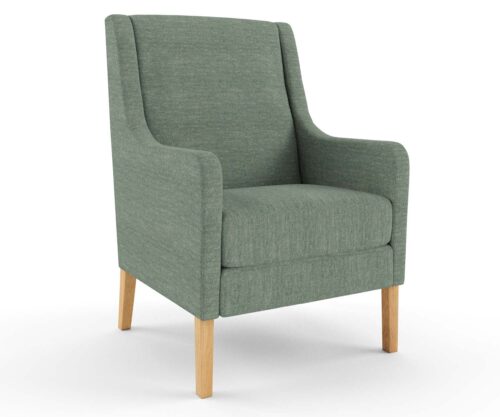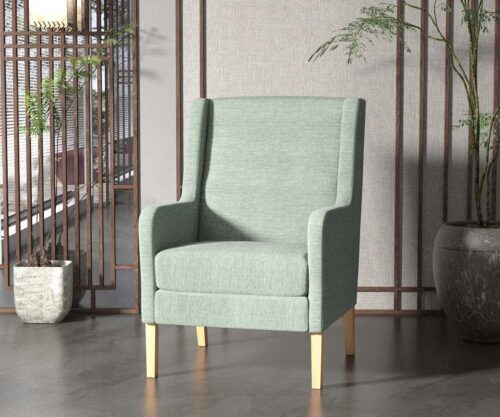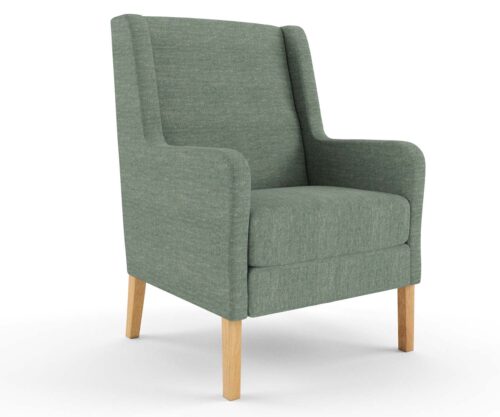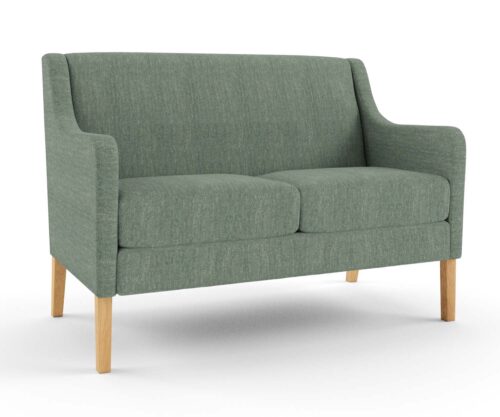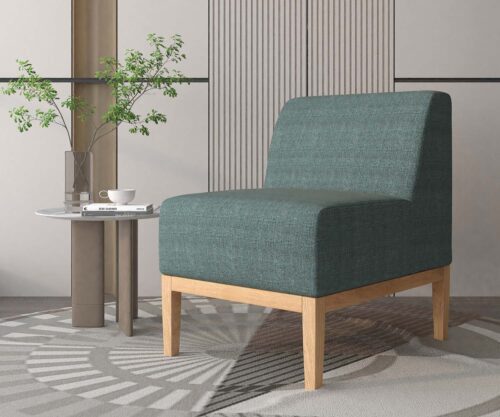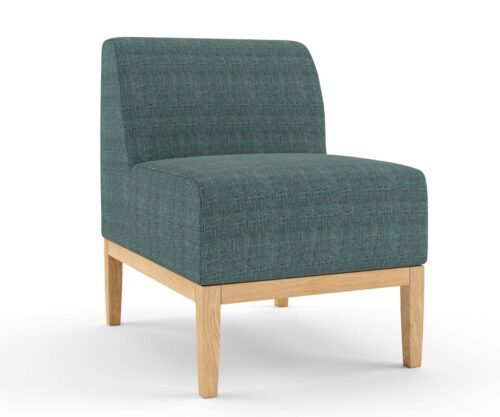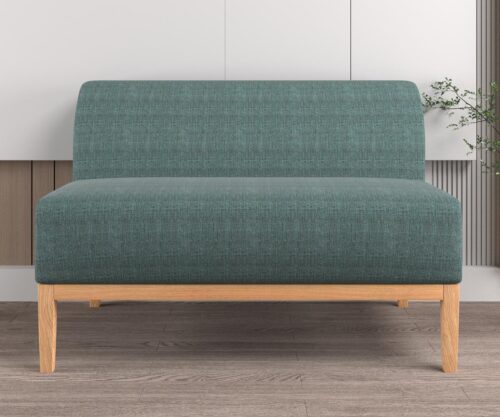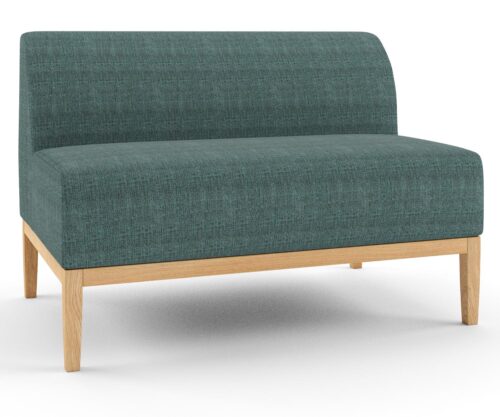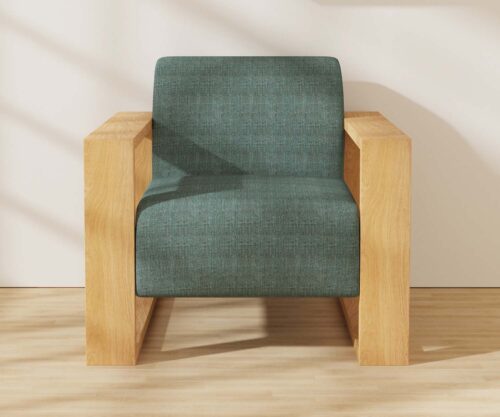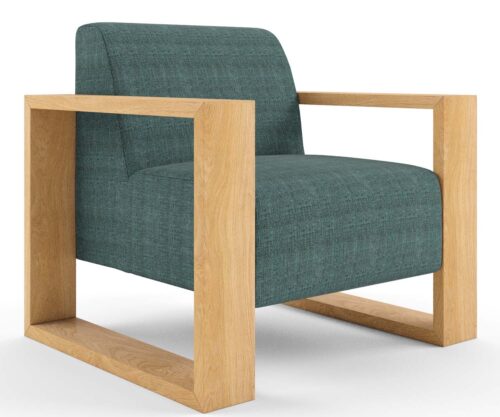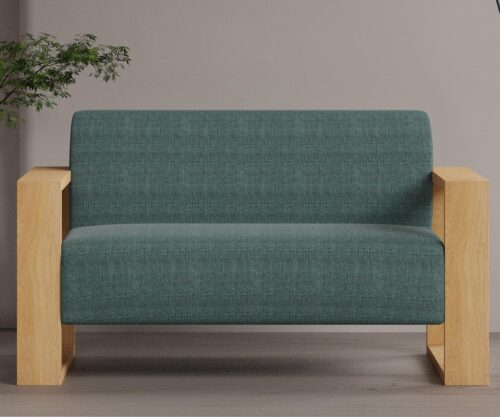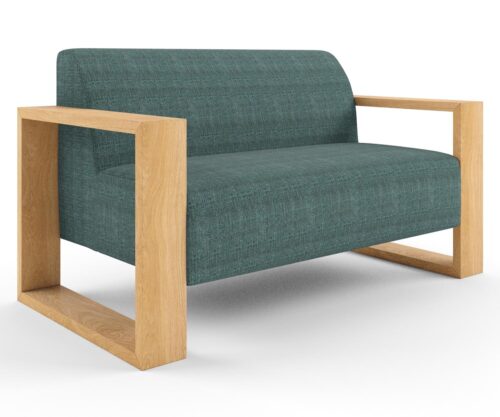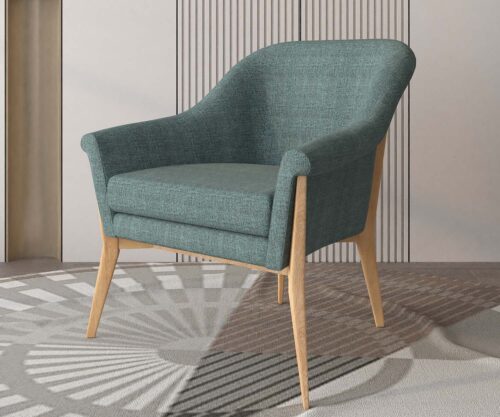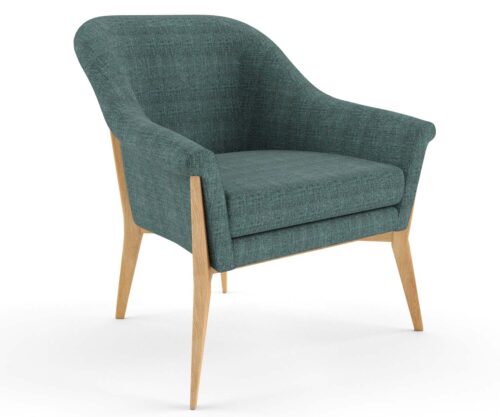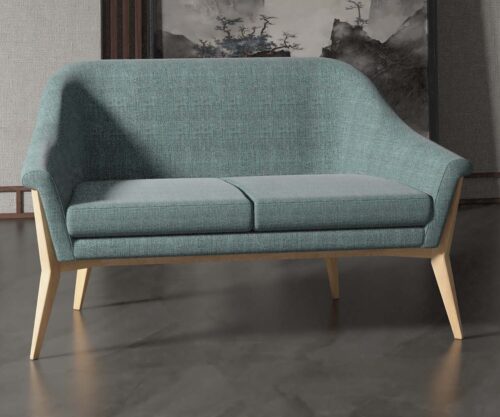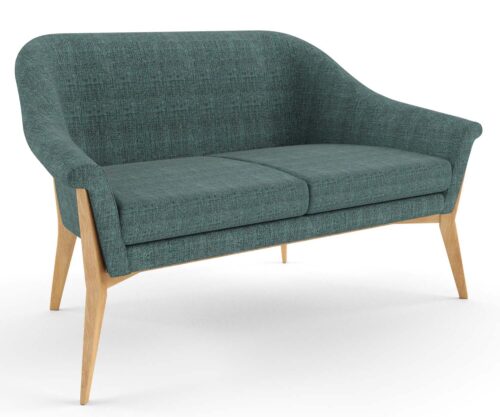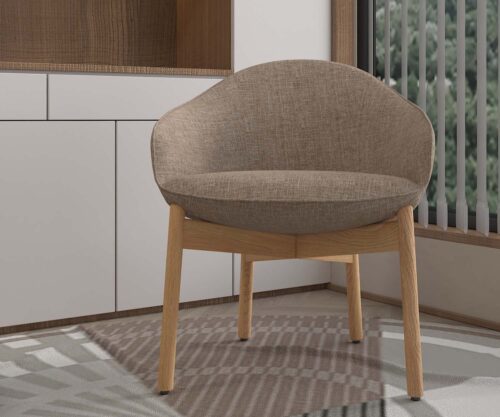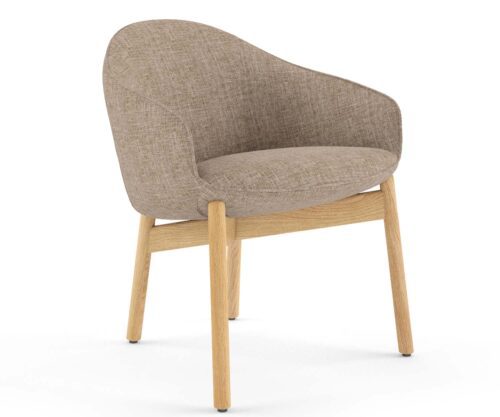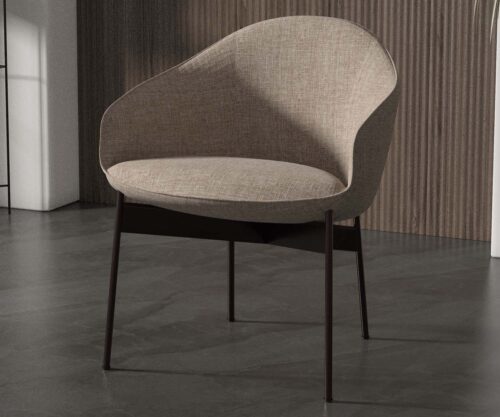5 Strategies to Extend the Average Lifespan of Furniture in Australian Aged Care
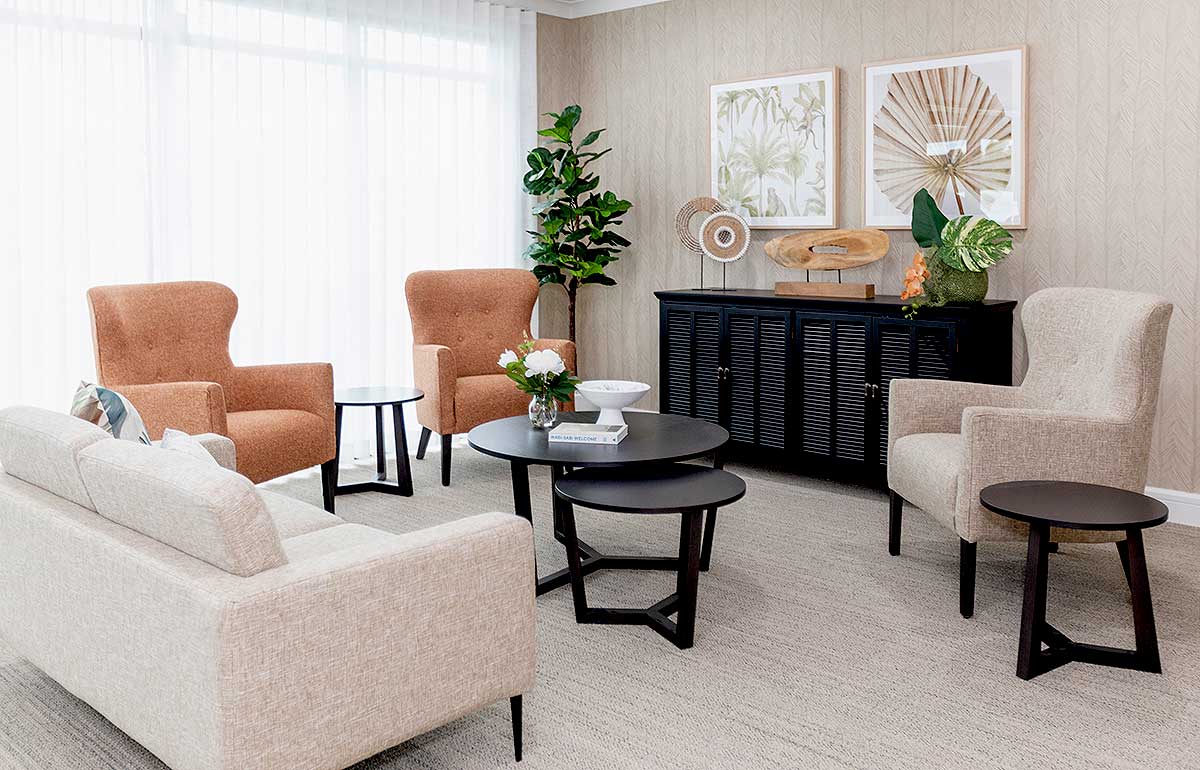
In Australian aged care facilities, providing residents with a comfortable and nurturing environment is paramount. Furniture plays a crucial role in ensuring the well-being and quality of life for elderly residents. However, with constant use and the wear and tear of time, furniture can deteriorate faster than anticipated, leading to frequent replacements and increased costs. To address this challenge, it’s essential to implement strategies that prolong the lifespan of furniture without compromising on comfort or quality. In this blog post, we’ll explore five effective strategies to achieve just that.
1. Invest in High-Quality Materials
Quality matters when it comes to furniture in aged care facilities. Opting for furniture made from durable materials such as hardwood, steel, or high-grade plastics can significantly extend its lifespan. While initial costs may be higher, the long-term savings and reduced need for replacements justify the investment. Additionally, high-quality materials often offer better support and comfort for residents, contributing to their overall well-being.
Factors to keep in mind when seeking long-lasting furniture:
- Prioritize structural materials known for durability and strength, such as solid hardwoods (e.g. Tasmanian Oak, maple, teak), stainless steel, or high-grade plastics (e.g. polypropylene).
- Choose high-performance upholstery fabrics and padding that are resilient, stain-resistant, and easy to clean, such as synthetic materials like polyester or nylon, treated with protective coatings.
- Select furniture from reputable Australian manufacturers known for their commitment to quality and craftsmanship, ensuring adherence to stringent standards and advanced manufacturing techniques. Whenever feasible, consider visiting the manufacturer to personally meet the furniture craftsmen and observe the operations of the manufacturing workshop.
- Recognize that while initial costs may be higher, investing in high-quality materials results in long-term benefits, including fewer repairs and replacements, significant cost savings, and enhanced resident comfort and satisfaction.
- Emphasize the importance of longevity and durability in furniture selection, prioritizing the well-being and safety of aged care facility residents.
2. Regular Maintenance and Inspections
Preventive maintenance is key to preserving the condition of furniture in aged care settings. Implementing a routine maintenance schedule for inspecting and repairing furniture can help identify minor issues before they escalate into major problems. This includes checking for loose screws or joints, repairing upholstery tears, and ensuring proper alignment of components. Regular cleaning and sanitization are also essential for maintaining hygiene standards and prolonging the lifespan of furniture.
How furniture maintenance and inspections can be implemented:
- Preventive Maintenance: Implementing a preventive maintenance program involves conducting regular inspections and addressing any issues before they escalate. This proactive approach helps identify minor defects or wear and tear early on, preventing them from worsening over time. By scheduling routine inspections, facilities can stay ahead of potential problems and take timely corrective actions, thus minimizing the need for costly repairs or replacements down the line.
- Scheduled Inspections: Establishing a schedule for regular inspections ensures that every piece of furniture receives proper attention. Depending on the facility’s size and usage patterns, inspections can be conducted weekly, bi-weekly, or monthly. During these inspections, trained staff members should thoroughly examine each piece of furniture for signs of damage, instability, or malfunction. Common areas of focus include checking for loose screws or joints, examining upholstery for tears or stains, and assessing the overall structural integrity of the furniture.
- Documentation and Tracking: Keeping detailed records of maintenance activities and inspection findings is essential for tracking the condition of furniture over time. A centralized database or maintenance log can help facilities monitor the frequency of inspections, identify recurring issues, and track maintenance tasks completed. This documentation also serves as a valuable reference for future planning and decision-making regarding furniture repairs, replacements, or upgrades.
- Proactive Repairs: Promptly addressing any issues identified during inspections is paramount to preventing further damage and ensuring the longevity of furniture. Facilities should have designated staff members or maintenance personnel trained to handle common repairs such as tightening screws, replacing worn-out components, or patching upholstery tears. Additionally, establishing partnerships with reliable vendors or repair service providers can expedite the resolution of more complex issues that require specialized expertise or replacement parts.
- Training and Education: Properly training staff members on maintenance procedures and best practices is essential for maintaining consistency and quality in inspection and repair activities. Providing ongoing education and refresher training sessions can help ensure that staff members are equipped with the knowledge and skills necessary to perform their maintenance duties effectively. Additionally, educating staff on the importance of regular maintenance and the role it plays in preserving furniture quality and resident comfort fosters a culture of accountability and stewardship within the facility.
3. Use Protective Covers and Accessories
Protective covers and accessories can serve as a barrier against spills, stains, and general wear and tear. Investing in waterproof and stain-resistant covers for sofas, chairs, and mattresses can help preserve their appearance and functionality over time. Similarly, using furniture pads or coasters under heavy items can prevent scratches and damage to surfaces. By incorporating these protective measures, aged care facilities can significantly extend the lifespan of their furniture while minimizing maintenance efforts.
Tips for the use of protective covers and accessories to help increase furniture longevity:
- Waterproof and Stain-Resistant Covers: Aged care facilities often face challenges such as spills and accidents, which can quickly damage furniture upholstery. Investing in waterproof and stain-resistant covers for sofas, chairs, and mattresses can provide a barrier against liquids, preventing them from seeping into the fabric and causing permanent stains or odors. These covers are typically made from durable materials such as vinyl or polyurethane, which are easy to clean and maintain. By using such covers, facilities can extend the lifespan of their furniture and maintain a clean and hygienic environment for residents.
- Damage-Resistant Materials: In addition to protecting against spills and stains, furniture covers can also shield against physical damage such as scratches, tears, and punctures. For example, utilizing covers made from tear-resistant fabrics or reinforced materials can provide an extra layer of protection for high-traffic areas or furniture pieces prone to damage. Similarly, covers with built-in padding or cushioning can help absorb impact and reduce the risk of dents or scratches on delicate surfaces. By choosing covers designed specifically to withstand wear and tear, aged care facilities can prolong the longevity of their furniture investments.
- Customizable Fit and Design: Protective covers come in a variety of sizes, shapes, and designs to accommodate different types of furniture and aesthetic preferences. Opting for customizable covers tailored to the dimensions and specifications of each furniture piece ensures a snug and secure fit, minimizing the risk of slippage or displacement. Additionally, facilities can choose covers with decorative patterns or colors that complement the overall design scheme of the space, enhancing its visual appeal while providing practical protection. By selecting covers that are both functional and visually appealing, aged care facilities can maintain a cohesive and inviting environment for residents and visitors alike.
- Easy Maintenance and Replacement: One of the key benefits of using protective covers is their ease of maintenance and replacement. Most covers are designed to be removable and machine washable, allowing for convenient cleaning and sanitization as needed. Facilities can establish a regular cleaning schedule for covers to remove dirt, germs, and allergens, thereby maintaining a hygienic environment for residents. Additionally, when covers become worn or damaged over time, they can be easily replaced without the need for extensive repairs or replacements of the underlying furniture. By regularly refreshing covers and accessories, aged care facilities can ensure that their furniture remains in optimal condition for years to come.
4. Rotate and Redistribute Furniture
Uneven distribution of weight and usage can accelerate the deterioration of furniture in certain areas of the facility. To mitigate this issue, consider implementing a rotation schedule for furniture pieces. Periodically rearranging seating arrangements and redistributing high-traffic items can help distribute wear more evenly across the furniture inventory. Additionally, rotating mattresses and cushions can prevent permanent indentations and prolong their lifespan. By adopting this strategy, aged care facilities can maximize the longevity of their furniture investments.
Benefits and implementation of rotating and redistributing furniture:
- Even Wear Distribution: One of the primary reasons for rotating and redistributing furniture is to ensure even wear across all pieces. In aged care facilities, certain areas may experience higher foot traffic or usage, leading to accelerated wear and tear on furniture in those locations. By regularly rotating furniture pieces, such as sofas, chairs, and tables, facilities can distribute the wear more evenly, preventing premature deterioration of specific items.
- Prevention of Damage and Indentations: Continuous use of the same furniture in fixed positions can result in permanent indentations and damage to surfaces, particularly in seating areas and mattresses. Rotating furniture allows for the redistribution of weight and pressure, reducing the likelihood of developing deep impressions or sagging. This is particularly important for items such as mattresses, where even weight distribution is essential for maintaining comfort and support for residents.
- Optimization of Space and Layout: Rotating furniture provides an opportunity to optimize the layout and functionality of aged care spaces. Facilities can experiment with different arrangements to maximize space utilization, improve traffic flow, and enhance the overall aesthetics of the environment. By periodically refreshing the layout, facilities can prevent stagnation and create a more dynamic and engaging atmosphere for residents.
- Extended Lifespan of Furniture: The cumulative effect of even wear distribution and prevention of damage ultimately leads to a longer lifespan for furniture pieces. By proactively managing the usage and positioning of furniture, aged care facilities can delay the need for replacements and reduce maintenance costs over time. This not only benefits the facility financially but also ensures continuity in providing residents with comfortable and functional furnishings.
- Improved Resident Experience: A well-maintained and thoughtfully arranged service environment contributes to the overall well-being and satisfaction of residents. By rotating furniture, facilities can create a fresh and inviting atmosphere that enhances residents’ comfort and enjoyment of communal spaces. Additionally, residents may appreciate the opportunity to experience different seating arrangements and layouts, promoting social interaction and engagement within the community.
Implementation of the rotation and redistribution strategy involves establishing a systematic approach tailored to the specific needs and layout of the facility. This may include:
- Developing a schedule for rotating furniture on a regular basis, taking into account factors such as usage patterns, seasonal changes, and special events.
- Ensuring that staff members are adequately trained on the proper techniques for moving and rearranging furniture safely to prevent injuries and damage.
- Seeking feedback from residents and staff to identify areas for improvement and adjustments to the furniture layout.
- Monitoring the condition of furniture regularly and addressing any issues promptly to prevent further damage or deterioration.
5. Educate Staff and Residents:
Effective utilization and care of furniture rely on proper education and training for both staff and residents. Educate staff members on the importance of handling furniture with care and following maintenance protocols consistently. Encourage residents to use furniture appropriately and provide guidelines on how to report any issues or concerns promptly. By fostering a culture of respect and responsibility towards furniture, aged care facilities can ensure that their assets are well-maintained and last longer.
Here’s some ideas on how to educate staff and residents to achieve furniture longevity:
- Staff Training Programs: Implementing comprehensive training programs for staff members is essential to ensure they understand the significance of proper furniture care and maintenance. These programs can cover topics such as safe handling techniques, correct cleaning procedures, and identifying signs of wear and tear. By equipping staff with the necessary knowledge and skills, facilities can minimize the risk of accidental damage and promote a culture of responsibility towards furniture assets.
- Demonstrations and Workshops: Organizing hands-on demonstrations and workshops can further reinforce staff understanding of proper furniture care practices. Inviting experts or suppliers to conduct sessions on furniture maintenance techniques can provide valuable insights and practical tips. Staff members can learn how to use specialized cleaning products effectively, address common issues like upholstery stains, and troubleshoot minor problems. Interactive sessions also offer opportunities for staff to ask questions and seek clarification on best practices.
- Resident Engagement Initiatives: Involving residents in furniture care efforts not only empowers them but also fosters a sense of ownership and community responsibility. Facilities can organize educational sessions or informational pamphlets highlighting the importance of treating furniture with care and respect. Simple reminders, such as posters or signage in common areas, can reinforce these messages and encourage residents to adhere to guidelines for furniture use. Engaging residents in discussions about the value of maintaining furniture can instill a sense of pride in their living environment and encourage cooperation in preserving its condition.
- Feedback Mechanisms: Establishing clear channels for feedback and communication allows staff and residents to report any issues or concerns regarding furniture promptly. Encourage staff to conduct regular inspections and encourage residents to notify staff of any damages or maintenance needs they observe. Implementing an efficient system for documenting and addressing feedback ensures that issues are addressed in a timely manner, preventing further damage and prolonging the lifespan of furniture.
- Continuous Education and Reinforcement: Education should be an ongoing process rather than a one-time effort. Facilities should provide regular reminders and updates on furniture care best practices to keep staff and residents informed. This can include incorporating furniture care tips into regular staff meetings or resident newsletters, as well as offering refresher training sessions periodically. By continuously reinforcing the importance of proper furniture care, facilities can maintain a high standard of upkeep and ensure the longevity of their furniture investments.
Maximizing the lifespan of furniture in aged care facilities requires a proactive approach that prioritizes quality, maintenance, and user education. By investing in high-quality materials, implementing regular maintenance routines, utilizing protective covers, rotating furniture, and educating staff and residents, aged care facilities can extend the longevity of their furniture while enhancing the comfort and well-being of their residents. Ultimately, these strategies not only contribute to cost savings but also uphold the commitment to providing a safe and nurturing environment for elderly individuals.
Australian Made Armchairs: Designed for Longevity in Aged Care Settings
More News
5 Strategies to Extend the Average Lifespan of Furniture in Australian Aged Care

In Australian aged care facilities, providing residents with a comfortable and nurturing environment is paramount. Furniture plays a crucial role in ensuring the well-being and quality of life for elderly residents. However, with constant use and the wear and tear of time, furniture can deteriorate faster than anticipated, leading to frequent replacements and increased costs. To address this challenge, it’s essential to implement strategies that prolong the lifespan of furniture without compromising on comfort or quality. In this blog post, we’ll explore five effective strategies to achieve just that.
1. Invest in High-Quality Materials
Quality matters when it comes to furniture in aged care facilities. Opting for furniture made from durable materials such as hardwood, steel, or high-grade plastics can significantly extend its lifespan. While initial costs may be higher, the long-term savings and reduced need for replacements justify the investment. Additionally, high-quality materials often offer better support and comfort for residents, contributing to their overall well-being.
Factors to keep in mind when seeking long-lasting furniture:
- Prioritize structural materials known for durability and strength, such as solid hardwoods (e.g. Tasmanian Oak, maple, teak), stainless steel, or high-grade plastics (e.g. polypropylene).
- Choose high-performance upholstery fabrics and padding that are resilient, stain-resistant, and easy to clean, such as synthetic materials like polyester or nylon, treated with protective coatings.
- Select furniture from reputable Australian manufacturers known for their commitment to quality and craftsmanship, ensuring adherence to stringent standards and advanced manufacturing techniques. Whenever feasible, consider visiting the manufacturer to personally meet the furniture craftsmen and observe the operations of the manufacturing workshop.
- Recognize that while initial costs may be higher, investing in high-quality materials results in long-term benefits, including fewer repairs and replacements, significant cost savings, and enhanced resident comfort and satisfaction.
- Emphasize the importance of longevity and durability in furniture selection, prioritizing the well-being and safety of aged care facility residents.
2. Regular Maintenance and Inspections
Preventive maintenance is key to preserving the condition of furniture in aged care settings. Implementing a routine maintenance schedule for inspecting and repairing furniture can help identify minor issues before they escalate into major problems. This includes checking for loose screws or joints, repairing upholstery tears, and ensuring proper alignment of components. Regular cleaning and sanitization are also essential for maintaining hygiene standards and prolonging the lifespan of furniture.
How furniture maintenance and inspections can be implemented:
- Preventive Maintenance: Implementing a preventive maintenance program involves conducting regular inspections and addressing any issues before they escalate. This proactive approach helps identify minor defects or wear and tear early on, preventing them from worsening over time. By scheduling routine inspections, facilities can stay ahead of potential problems and take timely corrective actions, thus minimizing the need for costly repairs or replacements down the line.
- Scheduled Inspections: Establishing a schedule for regular inspections ensures that every piece of furniture receives proper attention. Depending on the facility’s size and usage patterns, inspections can be conducted weekly, bi-weekly, or monthly. During these inspections, trained staff members should thoroughly examine each piece of furniture for signs of damage, instability, or malfunction. Common areas of focus include checking for loose screws or joints, examining upholstery for tears or stains, and assessing the overall structural integrity of the furniture.
- Documentation and Tracking: Keeping detailed records of maintenance activities and inspection findings is essential for tracking the condition of furniture over time. A centralized database or maintenance log can help facilities monitor the frequency of inspections, identify recurring issues, and track maintenance tasks completed. This documentation also serves as a valuable reference for future planning and decision-making regarding furniture repairs, replacements, or upgrades.
- Proactive Repairs: Promptly addressing any issues identified during inspections is paramount to preventing further damage and ensuring the longevity of furniture. Facilities should have designated staff members or maintenance personnel trained to handle common repairs such as tightening screws, replacing worn-out components, or patching upholstery tears. Additionally, establishing partnerships with reliable vendors or repair service providers can expedite the resolution of more complex issues that require specialized expertise or replacement parts.
- Training and Education: Properly training staff members on maintenance procedures and best practices is essential for maintaining consistency and quality in inspection and repair activities. Providing ongoing education and refresher training sessions can help ensure that staff members are equipped with the knowledge and skills necessary to perform their maintenance duties effectively. Additionally, educating staff on the importance of regular maintenance and the role it plays in preserving furniture quality and resident comfort fosters a culture of accountability and stewardship within the facility.
3. Use Protective Covers and Accessories
Protective covers and accessories can serve as a barrier against spills, stains, and general wear and tear. Investing in waterproof and stain-resistant covers for sofas, chairs, and mattresses can help preserve their appearance and functionality over time. Similarly, using furniture pads or coasters under heavy items can prevent scratches and damage to surfaces. By incorporating these protective measures, aged care facilities can significantly extend the lifespan of their furniture while minimizing maintenance efforts.
Tips for the use of protective covers and accessories to help increase furniture longevity:
- Waterproof and Stain-Resistant Covers: Aged care facilities often face challenges such as spills and accidents, which can quickly damage furniture upholstery. Investing in waterproof and stain-resistant covers for sofas, chairs, and mattresses can provide a barrier against liquids, preventing them from seeping into the fabric and causing permanent stains or odors. These covers are typically made from durable materials such as vinyl or polyurethane, which are easy to clean and maintain. By using such covers, facilities can extend the lifespan of their furniture and maintain a clean and hygienic environment for residents.
- Damage-Resistant Materials: In addition to protecting against spills and stains, furniture covers can also shield against physical damage such as scratches, tears, and punctures. For example, utilizing covers made from tear-resistant fabrics or reinforced materials can provide an extra layer of protection for high-traffic areas or furniture pieces prone to damage. Similarly, covers with built-in padding or cushioning can help absorb impact and reduce the risk of dents or scratches on delicate surfaces. By choosing covers designed specifically to withstand wear and tear, aged care facilities can prolong the longevity of their furniture investments.
- Customizable Fit and Design: Protective covers come in a variety of sizes, shapes, and designs to accommodate different types of furniture and aesthetic preferences. Opting for customizable covers tailored to the dimensions and specifications of each furniture piece ensures a snug and secure fit, minimizing the risk of slippage or displacement. Additionally, facilities can choose covers with decorative patterns or colors that complement the overall design scheme of the space, enhancing its visual appeal while providing practical protection. By selecting covers that are both functional and visually appealing, aged care facilities can maintain a cohesive and inviting environment for residents and visitors alike.
- Easy Maintenance and Replacement: One of the key benefits of using protective covers is their ease of maintenance and replacement. Most covers are designed to be removable and machine washable, allowing for convenient cleaning and sanitization as needed. Facilities can establish a regular cleaning schedule for covers to remove dirt, germs, and allergens, thereby maintaining a hygienic environment for residents. Additionally, when covers become worn or damaged over time, they can be easily replaced without the need for extensive repairs or replacements of the underlying furniture. By regularly refreshing covers and accessories, aged care facilities can ensure that their furniture remains in optimal condition for years to come.
4. Rotate and Redistribute Furniture
Uneven distribution of weight and usage can accelerate the deterioration of furniture in certain areas of the facility. To mitigate this issue, consider implementing a rotation schedule for furniture pieces. Periodically rearranging seating arrangements and redistributing high-traffic items can help distribute wear more evenly across the furniture inventory. Additionally, rotating mattresses and cushions can prevent permanent indentations and prolong their lifespan. By adopting this strategy, aged care facilities can maximize the longevity of their furniture investments.
Benefits and implementation of rotating and redistributing furniture:
- Even Wear Distribution: One of the primary reasons for rotating and redistributing furniture is to ensure even wear across all pieces. In aged care facilities, certain areas may experience higher foot traffic or usage, leading to accelerated wear and tear on furniture in those locations. By regularly rotating furniture pieces, such as sofas, chairs, and tables, facilities can distribute the wear more evenly, preventing premature deterioration of specific items.
- Prevention of Damage and Indentations: Continuous use of the same furniture in fixed positions can result in permanent indentations and damage to surfaces, particularly in seating areas and mattresses. Rotating furniture allows for the redistribution of weight and pressure, reducing the likelihood of developing deep impressions or sagging. This is particularly important for items such as mattresses, where even weight distribution is essential for maintaining comfort and support for residents.
- Optimization of Space and Layout: Rotating furniture provides an opportunity to optimize the layout and functionality of aged care spaces. Facilities can experiment with different arrangements to maximize space utilization, improve traffic flow, and enhance the overall aesthetics of the environment. By periodically refreshing the layout, facilities can prevent stagnation and create a more dynamic and engaging atmosphere for residents.
- Extended Lifespan of Furniture: The cumulative effect of even wear distribution and prevention of damage ultimately leads to a longer lifespan for furniture pieces. By proactively managing the usage and positioning of furniture, aged care facilities can delay the need for replacements and reduce maintenance costs over time. This not only benefits the facility financially but also ensures continuity in providing residents with comfortable and functional furnishings.
- Improved Resident Experience: A well-maintained and thoughtfully arranged service environment contributes to the overall well-being and satisfaction of residents. By rotating furniture, facilities can create a fresh and inviting atmosphere that enhances residents’ comfort and enjoyment of communal spaces. Additionally, residents may appreciate the opportunity to experience different seating arrangements and layouts, promoting social interaction and engagement within the community.
Implementation of the rotation and redistribution strategy involves establishing a systematic approach tailored to the specific needs and layout of the facility. This may include:
- Developing a schedule for rotating furniture on a regular basis, taking into account factors such as usage patterns, seasonal changes, and special events.
- Ensuring that staff members are adequately trained on the proper techniques for moving and rearranging furniture safely to prevent injuries and damage.
- Seeking feedback from residents and staff to identify areas for improvement and adjustments to the furniture layout.
- Monitoring the condition of furniture regularly and addressing any issues promptly to prevent further damage or deterioration.
5. Educate Staff and Residents:
Effective utilization and care of furniture rely on proper education and training for both staff and residents. Educate staff members on the importance of handling furniture with care and following maintenance protocols consistently. Encourage residents to use furniture appropriately and provide guidelines on how to report any issues or concerns promptly. By fostering a culture of respect and responsibility towards furniture, aged care facilities can ensure that their assets are well-maintained and last longer.
Here’s some ideas on how to educate staff and residents to achieve furniture longevity:
- Staff Training Programs: Implementing comprehensive training programs for staff members is essential to ensure they understand the significance of proper furniture care and maintenance. These programs can cover topics such as safe handling techniques, correct cleaning procedures, and identifying signs of wear and tear. By equipping staff with the necessary knowledge and skills, facilities can minimize the risk of accidental damage and promote a culture of responsibility towards furniture assets.
- Demonstrations and Workshops: Organizing hands-on demonstrations and workshops can further reinforce staff understanding of proper furniture care practices. Inviting experts or suppliers to conduct sessions on furniture maintenance techniques can provide valuable insights and practical tips. Staff members can learn how to use specialized cleaning products effectively, address common issues like upholstery stains, and troubleshoot minor problems. Interactive sessions also offer opportunities for staff to ask questions and seek clarification on best practices.
- Resident Engagement Initiatives: Involving residents in furniture care efforts not only empowers them but also fosters a sense of ownership and community responsibility. Facilities can organize educational sessions or informational pamphlets highlighting the importance of treating furniture with care and respect. Simple reminders, such as posters or signage in common areas, can reinforce these messages and encourage residents to adhere to guidelines for furniture use. Engaging residents in discussions about the value of maintaining furniture can instill a sense of pride in their living environment and encourage cooperation in preserving its condition.
- Feedback Mechanisms: Establishing clear channels for feedback and communication allows staff and residents to report any issues or concerns regarding furniture promptly. Encourage staff to conduct regular inspections and encourage residents to notify staff of any damages or maintenance needs they observe. Implementing an efficient system for documenting and addressing feedback ensures that issues are addressed in a timely manner, preventing further damage and prolonging the lifespan of furniture.
- Continuous Education and Reinforcement: Education should be an ongoing process rather than a one-time effort. Facilities should provide regular reminders and updates on furniture care best practices to keep staff and residents informed. This can include incorporating furniture care tips into regular staff meetings or resident newsletters, as well as offering refresher training sessions periodically. By continuously reinforcing the importance of proper furniture care, facilities can maintain a high standard of upkeep and ensure the longevity of their furniture investments.
Maximizing the lifespan of furniture in aged care facilities requires a proactive approach that prioritizes quality, maintenance, and user education. By investing in high-quality materials, implementing regular maintenance routines, utilizing protective covers, rotating furniture, and educating staff and residents, aged care facilities can extend the longevity of their furniture while enhancing the comfort and well-being of their residents. Ultimately, these strategies not only contribute to cost savings but also uphold the commitment to providing a safe and nurturing environment for elderly individuals.
Australian Made Armchairs: Designed for Longevity in Aged Care Settings
Commercial furniture by room
Based in Brisbane, we’re an Australian manufacturer of aged care furniture, retirement living furniture, hospital & healthcare furniture, hotel & accommodation furniture and student accommodation furniture. We also supply a range of commercial office furniture.
Discover the FHG Look Book: Your Source of Inspiration for Quality Australian-Made Commercial Furniture
- Quality Craftsmanship: See why we’ve been a trusted partner for over 25 years.
- Local Excellence: Learn how our Brisbane team ensures the highest standards.
- Inspiration and Ideas: Find innovative furniture solutions for any environment.
Don’t miss the opportunity to transform your commercial space with FHG’s expertly crafted furniture. Download the FHG Look Book today and start your journey towards exceptional design and quality.


